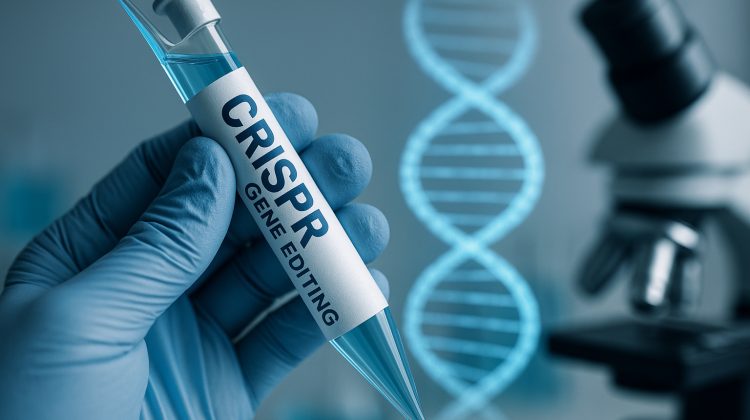
In the past decade, no biotechnology has disrupted medicine’s trajectory more than CRISPR. What began as a bacterial defense mechanism is now a precision tool capable of rewriting the very code of life — not in theory, but in operating rooms, research labs, and even early-stage clinical treatments around the world.
CRISPR isn’t just about the promise of curing rare diseases; it’s about reshaping the way we approach all of human health. From eradicating genetic disorders before birth to reprogramming immune cells to fight cancer, it’s redefining the limits of what medicine can achieve.
What Is CRISPR, Really?
CRISPR stands for Clustered Regularly Interspaced Short Palindromic Repeats — a mouthful that’s basically a bacterial defense system re-engineered for human purposes. In nature, it’s how bacteria recognize and slice up viral invaders.
Scientists have hijacked that system, pairing it with a protein called Cas9 (or other “molecular scissors”) to cut DNA at exact locations. Once the DNA is cut, cells can be coaxed to fix or replace the targeted sequence.
Think “find and replace” — but instead of typos, we’re fixing genetic errors.
From Science Fiction to Science Clinic
In its early days, CRISPR was mainly a lab curiosity. Today, it’s being used in:
- Gene therapy for inherited diseases like sickle cell anemia and muscular dystrophy.
- Cancer treatment trials aimed at making immune cells better at hunting down tumors.
- Agriculture to create crops that resist pests without pesticides.
The speed of CRISPR’s move from theory to therapy is one of the fastest in biotech history. We’re not talking decades — some treatments have gone from concept to patient trials in under five years.
Precision Medicine Gets Even More Precise
Traditional medicine often treats symptoms. CRISPR targets causes — down to the single letter in a genetic code. This is where it gets revolutionary:
- Rare genetic disorders once considered untreatable are now potential candidates for cures.
- Infectious diseases like HIV might eventually be tackled at the DNA level, removing viral code from human cells entirely.
- Preventive medicine could shift dramatically — why wait for someone to develop a genetic disease if you can fix the mutation at birth?
Ethical Questions That Won’t Stay in the Lab
CRISPR’s potential is matched only by its ethical baggage. It forces us to ask:
- Should we edit embryos to prevent disease — and where’s the line between prevention and “enhancement”?
- Who gets access to CRISPR therapies — and will it widen the gap between the medical haves and have-nots?
- How do we prevent misuse for purposes that sound like bad sci-fi (designer babies, genetic discrimination, or bio-weapons)?
In short: we’ve opened the box, but we still need rules for the game.
The Road Ahead: CRISPR in 2035 and Beyond
Expect CRISPR to keep expanding into mainstream healthcare over the next decade. Early treatments will target life-threatening or debilitating diseases, but as safety and efficiency improve, we could see:
- Mass-market genetic screenings paired with preventive edits.
- Personalized cancer treatments designed in weeks instead of years.
- Global health campaigns using CRISPR to eradicate certain pathogens entirely.
If handled responsibly, CRISPR might become as common in a hospital as antibiotics — the ultimate upgrade to the human repair kit.
Editing Our Future
CRISPR is a rare case where the hype might actually match the reality. It’s a tool that could transform medicine, extend lives, and rewrite humanity’s relationship with disease itself.
Whether it becomes a beacon of hope or a Pandora’s box depends on the choices we make now. For better or worse, the future of human health is being edited in real time — and the cursor is blinking.
Leave a Reply